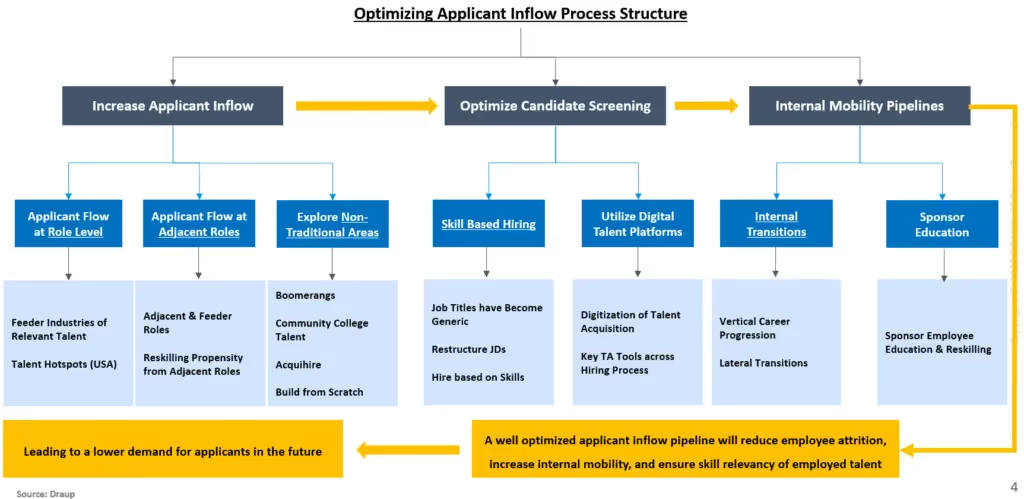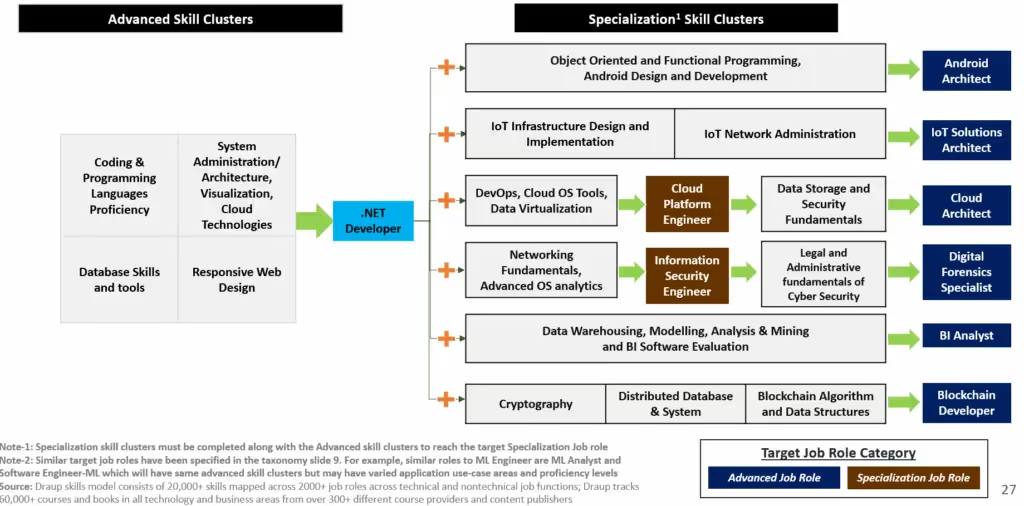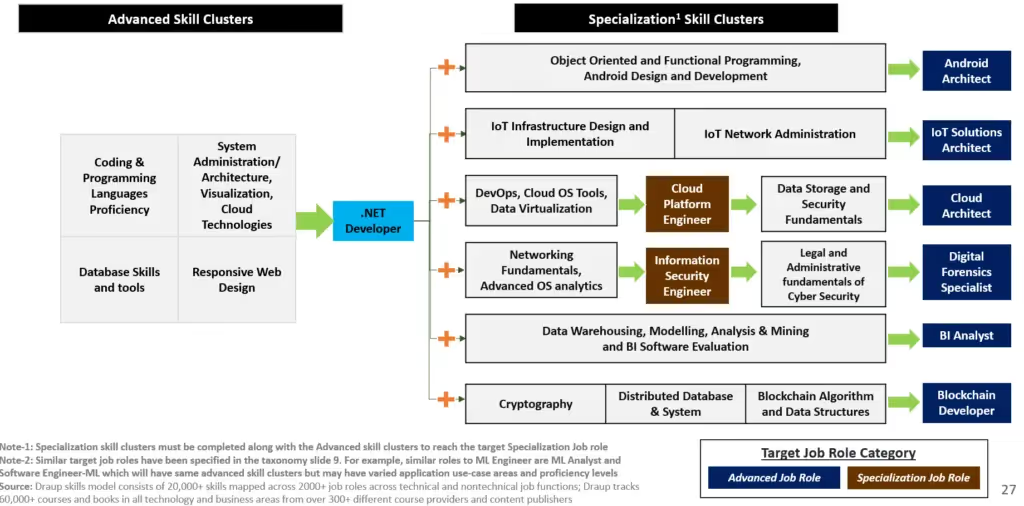Optimizing Your Applicant Inflow Process
In a recent book titled A thousand brains, author Jeff Hawkins asks this powerful question. “If a tree falls in the forest and no one is there to hear it, did it make a sound? Similarly, we can ask: if the universe came into and out of existence and there were no brains to know it, did the universe really exist? Who would know.”
This statement may sound philosophical, but the author raises this question to understand and map how human brains learn and perform actions. As we mentioned in one of the previous emails, we know very little about the brain despite studying it for years. The Redwood Center of Neuroscience’s new understanding that focuses on developing mathematical and computational models of the underlying neurobiological mechanisms states that the Neocortex in the brain is responsible for learning the world as it experiences it. There are now many proofs that what we as humans initially thought of as a limitation or disability is now proven wrong. As a toddler who was slow to speak – it was not until he was five that Anthony Tan (Grab CEO) uttered his first clear words. Anthony Tan has nevertheless talked his way through life well enough, including impressing professors at Harvard Business School for new business ventures. As Jeff Hawkins says, the only thing that limits learning is any existing pre-conceived opinions. If organizations can assure openness, then the new digital world is full of possibilities
This lengthy preamble is given to think about Recruitment and Workforce Planning from a constraint optimization standpoint. In 1984, a book called The Goal was written by Eliyahu Goldratt that highlighted how to look at the constraints of a system. If we understand the constraints of a system, then those can be strategically managed for better outcomes. This concept is prevalent in the supply chain but can be utilized in many areas. I am sure many of you would have read this book. The concept of constraints optimization has been around for decades. If we look at the core objectives of Workforce Planning and Recruitment – the foundational aspect of what we are attempting to do is to ensure that organizations have the right skills to execute on all the priorities satisfying to the extent possible the conditions of optimality. (optimality conditions may be cost, location, diversity, and various parameters). But at the core of it, we are here to ensure skilled human resources and intelligent machines are available. It is essential to understand Machines, not from the lens of excluding human power. It is quite the contrary. Machines need to be understood well so you can use diverse talent. If you look at OpenAI Codex, they have developed a Natural Language driven way to write code. Proficient in more than a dozen programming languages, Codex can now interpret simple commands in natural language and execute them on the user’s behalf – making it possible to build a natural language interface to existing applications. Understanding aspects like this helps take advantage of human resources, which may be very good at logical thinking but may not know the syntax.
In a system where the primary objective is to ensure the availability of skills, the Applicant Flow should be optimal. Without enough Applicant Flow, the system cannot thrive and survive. Applying the constraints optimization principles, one should ensure no constraints in applicants flowing through the system. We then have to work on increasing the applicant flow (as this is where many organizations will feel the constraint). This is where the convergence of Recruitment-Workforce Planning and Reskilling is essential. Many organizations do not very well understand this convergence. As stated in the preamble, there should be optimal symbiosis across these functions for the Neocortex of Human Resources to evolve and grow.
At Draup, we have mapped out effective strategies to increase the Applicant flow. The following graphic summarizes the approach:

The following are the critical elements of this framework:
- For each element listed here, we need to set up agile teams and ensure there is a super-agile connect regularly
- Some companies are doing well in specific strategies based on our research (for example, companies like JP Morgan have an aggressive Boomerang talent strategy)
- A deeper understanding of what skills are available at fresh talent across university types will be useful
- Career pages should offer a lot of flexibility with various search filters (we have written about this in one of the previous mails)
- Internal candidates should be viewed as a potential candidate pool
- Reskilling plans should be granular (example graph below)

- The feeder pool should be understood from the context of AI evolution (some jobs are getting easier to do due to AI, thereby making it accessible to a broader talent pool)
- Automation and understanding how it impacts and helps labor is critical
- Acquihire target strategies can have a meaningful impact on Applicant Flow
- A little investment in employee education can go a long way in generating skills and certifications the organization needs
By focusing on these elements, companies can design a winning 2025 and beyond talent strategy
The following are the critical elements of this framework
- For each element listed here, we need to set up agile teams and ensure there is a super-agile connect regularly
- Some companies are doing well in specific strategies based on our research (for example, companies like JP Morgan have an aggressive Boomerang talent strategy)
- A deeper understanding of what skills are available at fresh talent across university types will be useful
- Career pages should offer a lot of flexibility with various search filters (we have written about this in one of the previous mails)
- Internal candidates should be viewed as a potential candidate pool
- Reskilling plans should be granular (example graph below)

- The feeder pool should be understood from the context of AI evolution (some jobs are getting easier to do due to AI, thereby making it accessible to a broader talent pool)
- Automation and understanding how it impacts and helps labor is critical
- Acquihire target strategies can have a meaningful impact on Applicant Flow
- A little investment in employee education can go a long way in generating skills and certifications the organization needs
By focusing on these elements, companies can design a winning 2025 and beyond talent strategy.










.svg)




















.svg)





.svg)
